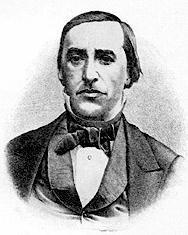Planning worship?
Check out our sister site, ZeteoSearch.org,
for 20+ additional resources related to your search.
- |
User Links
Search Results
DUKE STREET
Meter: 8.8.8.8 Appears in 1,494 hymnals Composer and/or Arranger: John Hatton Topics: A Missionary Service Tune Key: D Major Incipit: 13456 71765 55565 Used With Text: Jesus Shall Reign Where'er the Sun
DUKE STREET
George Duffield

1818 - 1888 Topics: A Missionary Service Author of "Stand Up, Stand Up for Jesus" in The Hymnal and Order of Service Duffield, George, Jr., D.D., son of the Rev. Dr. Duffield, a Presbyterian Minister, was born at Carlisle, Pennsylvania, Sept. 12, 1818, and graduated at Yale College, and at the Union Theological Seminary, New York. From 1840 to 1847 he was a Presbyterian Pastor at Brooklyn; 1847 to 1852, at Bloomfield, New Jersey; 1852 to 1861, at Philadelphia; 1861 to 1865, at Adrian, Michigan; 1865 to 1869, at Galesburg, Illinois; 1869, at Saginaw City, Michigan; and from 1869 at Ann Arbor and Lansing, Michigan. His hymns include;—
1. Blessed Saviour, Thee I love. Jesus only. One of four hymns contributed by him to Darius E. Jones's Temple Melodies, 1851. It is in 6 stanzas of 6 lines. In Dr. Hatfield's Church Hymnbook it is given in 3 stanzas. The remaining three hymns of the same date are:—
2. Parted for some anxious days. Family Hymn.
3. Praise to our heavenly Father, God. Family Union.
4. Slowly in sadness and in tears. Burial.
5. Stand up, stand up for Jesus. Soldiers of the Cross. The origin of this hymn is given in Lyra Sac. Americana, 1868, p. 298, as follows:—
"I caught its inspiration from the dying words of that noble young clergyman, Rev. Dudley Atkins Tyng, rector of the Epiphany Church, Philadelphia, who died about 1854. His last words were, ‘Tell them to stand up for Jesus: now let us sing a hymn.' As he had been much persecuted in those pro-slavery days for his persistent course in pleading the cause of the oppressed, it was thought that these words had a peculiar significance in his mind; as if he had said, ‘Stand up for Jesus in the person of the downtrodden slave.' (Luke v. 18.)"
Dr. Duffield gave it, in 1858, in manuscript to his Sunday School Superintendent, who published it on a small handbill for the children. In 1858 it was included in The Psalmist, in 6 stanzas of 8 lines. It was repeated in several collections and in Lyra Sac. Amer., 1868, from whence it passed, sometimes in an abbreviated form, into many English collections. [Rev. F. M. Bird, M.A.]
- John Julian, Dictionary of Hymnology (1907)
See also in:
Hymn Writers of the Church
George Duffield
Gustaf Düben
1628 - 1690 Topics: A Missionary Service Composer of "JESUS ÄR MIN VÄN DEN BÄSTE" in The Hymnal and Order of Service Gustaf Düben (also Gustav) (1628 – 1690) was a Swedish organist and composer.
Düben was born and died in Stockholm. He was the grandson of the German-born Andreas Düben, who had been organist at the Thomaskirche in Leipzig, and son of the composer and court kapellmeister Anders Düben (the Younger)]. In 1663, he succeeded his father as both hovkapellmästare, director of the Royal Swedish Court Orchestra, and organist of the German St Gertrud Church in Stockholm.
He was the father of four children: Gustav von Düben the Younger (1659-1726), Joachim von Düben the Elder (1671-1730), Emerentia von Düben (1669-1743) and Anders von Düben (the Younger) (1673-1738). Gustaf the younger and Anders the Younger appears to have been the only of his children who followed in his father's footsteps as a composer, courtier and eventually kapellmeister.
The Düben collection of manuscripts includes many unicae of German baroque music.
--en.wikipedia.org/wiki/
Gustaf Düben


 My Starred Hymns
My Starred Hymns


